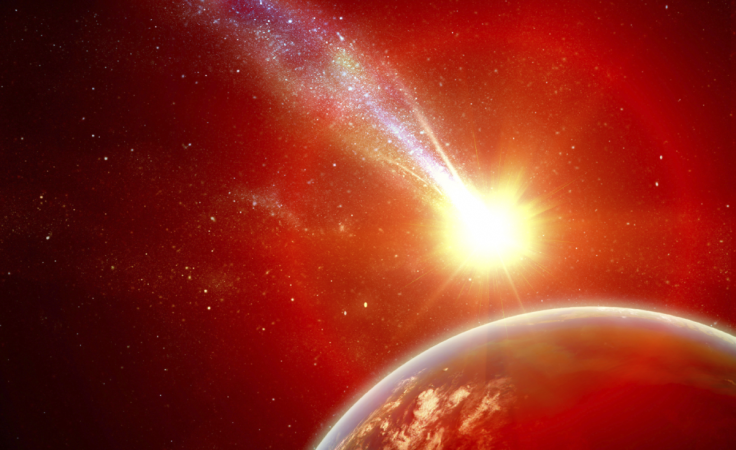12,000-year-old comet crash set fires larger than dinosaur-killing asteroid, caused another Ice Age
The fires ignited by the comet strike covered around 10% of the Earth's surface in massive flames.

Around 12,800 years ago, the Earth was hit by fragments of a massive space rock. The comet strike not only set Earth ablaze with fires bigger than those caused by the infamous dinosaur-killing asteroid, but it also set off another spell of Ice Age.
According to new research, the comet crash that occurred at the end of an Ice Age, triggered fires that were so big that the dust from the fires clogged up the sky and cut off sunlight. Plants and food sources died out and eventually the Earth's climate experienced a rapid cooling, which in turn caused yet another Ice Age that stretched for another thousand years.
"The hypothesis is that a large comet fragmented and the chunks impacted the Earth, causing this disaster," Adrian Melott, professor of physics and astronomy at Kansas University, said in a statement. "A number of different chemical signatures — carbon dioxide, nitrate, ammonia and others — all seem to indicate that an astonishing 10 percent of the Earth's land surface, or about 10 million square kilometers, was consumed by fires."
Scientists believe that the historical disaster was caused when Earth collided with the fragments of a disintegrating comet, roughly measured to be around 100km in diameter. The remnants of the massive comet are believed to still linger on in our solar system to this very day. Researchers believe that the comet strike likely touched off the Younger Dryas cooling episode and also caused the late Pleistocene extinction of larger species, as well as causing "human cultural shifts and population declines".
"Computations suggest that the impact would have depleted the ozone layer, causing increases in skin cancer and other negative health effects," Melott said. "The impact hypothesis is still a hypothesis, but this study provides a massive amount of evidence, which we argue can only be all explained by a major cosmic impact."
The findings of the new research were split into two research papers — one which is based on data gathered from ice cores and glaciers, while the other study is based on data collected from lakes and terrestrial sediments. The researchers conducted measurements at over 170 different sites across the world.
The new research papers have been published in the Journal of Geology.






















